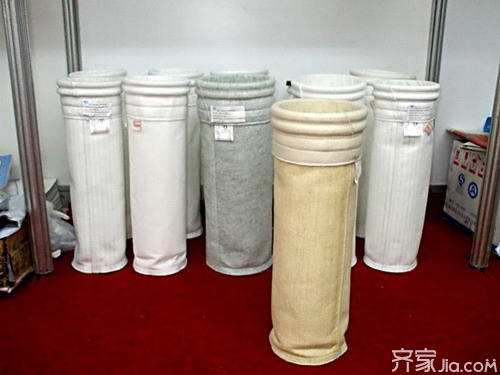In recent years, with the rapid economic development, there has been an increase in metallurgical steel-making electric furnaces and boilers using raw coal as fuel. The air pollutants discharged from these furnaces cause great damage to the surrounding environment, so particulate matter is removed from dust-containing gases to reduce Its emissions to the atmosphere are becoming more and more important. Then how to choose the filter dust filter used? What kinds of filter materials are commonly used in dust collectors? How to choose dust filter The filter material and filter bag are the core of the bag filter, and its technical development has been more than half a century. In the past, there have been two major types of filter bags used in cement industry, including normal temperature and high temperature. General mill exhaust gas, material rotation, crushing and ventilation equipment are all made of industrial polyester (polyester staple fiber) at room temperature (<120°C). The cement dryer, cement rotary kiln, grate cooler, and other force equipment use high temperature type glass fiber (120°C<T<250°C) In the early 1980s, with the understanding of the performance of flue gas dust in practical applications, this simple* temperature-differentiated approach to filter media has not been adapted. In the cement industry, the types of flue gases include moisture, acid, alkali, and explosive dust, and in the shaft kiln flue gas, dryer flue gas, and raw material grinding waste gas, adhesion, ultrafineness The characteristics of sharpness and so on cannot be ignored. The following 3 points should be taken into account when selecting the filter media: 1 The chemical fiber is superior to the glass fiber filter bag, the expanded glass fiber is superior to the general glass fiber, and the fine, short, and crimped fibers are superior to the coarse, long, and smooth fibers. 2 In the felt, it is better to use acupuncture to strengthen the interlacing between the fibers. The satin fabric is the best in the fabric. The brushing on the surface of the fabric is also a measure to improve the wear resistance, but the felt, satin fabric and fleece The filter will increase the resistance value. 3 For the ordinary filter surface coating, calendering and other post-treatment can also improve the wear resistance. For glass fiber filter, silicone oil, graphite, polytetrafluoroethylene resin treatment can improve wear resistance, folding resistance. However, when the coated filter media is used in a condition with strong abrasion, the film will be prematurely worn and the film will be lost. Common types of filter materials for dust collectors 1, polyamide fiber Advantages: wear resistance, alkali resistance, good temperature resistance, long-term use below 200 °C. Disadvantages: General wear resistance, high prices. 2, polytetrafluoroethylene fiber Advantages: wear resistance, acid and alkali resistance, corrosion resistance, good temperature resistance, can be used under 200 °C for a long time, high mechanical strength, can work under higher filtration speed (2.4m/min), dust removal efficiency high. Disadvantages: expensive 3, glass fiber expanded yarn filter cloth Advantages: High temperature resistance, corrosion resistance, smooth surface, no condensation, no shrinkage. The ability to catch dust is good, the dust removal efficiency is high, and the price is moderate. It is suitable to be used in the bag type dust removal equipment that uses the reverse blow cleaning method. The above points are the summary of this site for everyone to sum up how to select the dust filter, dust filter commonly used filter type information, I believe we will have a certain understanding after reading, for the pollution of the atmospheric environment due to our attention As a result, pollution is minimized. Smart vacuum cleaner Charger Vacuum cleaner Water filter Vacuum cleaner Handheld vacuum cleaner Vacuum bag vacuum cleaner
Cleaning runs throughout the semiconductor manufacturing. The cleaning of semiconductors runs through the entire semiconductor process. From the silicon wafer manufacturing, it is necessary to clean the polished silicon wafer to remove surface contaminants, remove photoresist, wet etching, CVD, etc. in the chip preparation, and then to the final material quality inspection. Every step needs to be cleaned to ensure that the next step is free from impurities and maintain the yield of the product. At the same time, as the chip process continues to shrink, the number of cleanings required is increasing. According to statistics, the number of cleaning processes accounts for one-third of the entire chip manufacturing process, and is an important part of chip manufacturing. Very low surface tension and viscosity, it can be well dispersed and spread into various gaps, with good scouring and wetting cleaning effect.
Cleaning Solution For Semiconductor Chemical Cleaning Solutions,Hydrofluoroether Boiling Point Detergent,Hfe Poisonless Harmless Cleaning Solution,Cleaning Solution For Semiconductor Guangdong Giant Fluorine Energy Saving Technology Co.,Ltd , https://www.tuwtech.com
